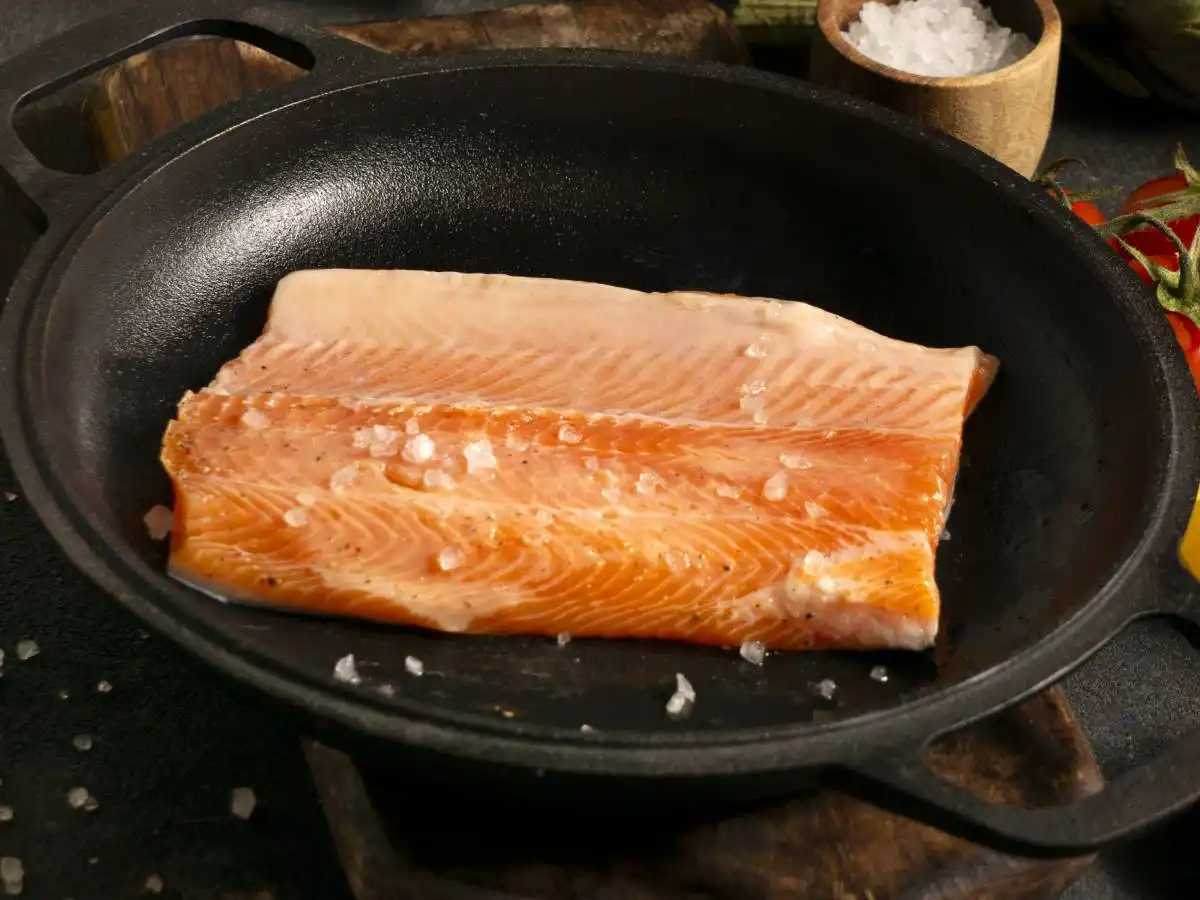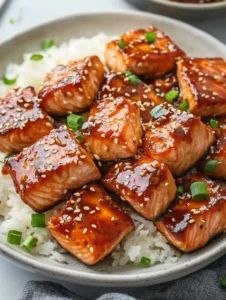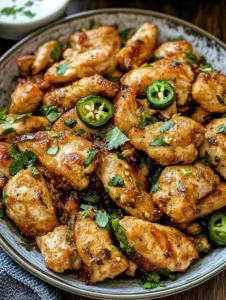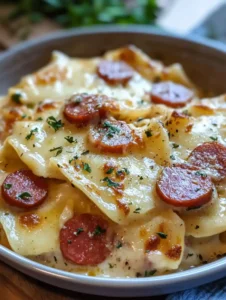Salmon, with its rich, buttery flavor and a plethora of health benefits, has long been a favorite on dinner tables worldwide. Yet, the journey from a raw, vibrant piece of fish to a perfectly cooked, flaky delight is often fraught with culinary challenges. Fear not, for this comprehensive guide is your beacon through the misty seas of salmon preparation. From selecting the finest fillet to mastering the oven’s heat, we’ll navigate every step together. So, let’s embark on this flavorful voyage, ensuring your salmon is nothing short of spectacular.

Introduction to Cooking Salmon
Cooking salmon is akin to an art form, where precision meets passion. It’s not just about heating a piece of fish; it’s about unlocking the depths of flavor and texture that lie within. This journey begins with understanding the nutritional benefits of salmon, a powerhouse of omega-3 fatty acids, proteins, and vitamins. But before we dive into the culinary depths, let’s set the stage for what lies ahead.
The Art of Perfectly Cooked Salmon
Perfectly cooked salmon is a sight to behold and a taste to savor. It’s moist, tender, and flaky, with each bite melting in your mouth. The secret? It’s all in the temperature and timing. Overcooking is the nemesis of good salmon, turning it dry and chewy. But fear not, for we’re here to guide you through the process, ensuring your salmon is cooked to perfection every time.
Understanding Salmon’s Nutritional Benefits
Salmon isn’t just delicious; it’s a nutritional powerhouse. Low in saturated fat and high in omega-3 fatty acids, it’s essential for brain function and heart health. Rich in protein, potassium, vitamin D, and B12, salmon is a smart addition to a balanced diet. The FDA even recommends consuming at least 8 ounces of fish per week. So, not only does salmon taste good, but it also does good for your body.
As we embark on this culinary journey, remember that cooking salmon is an opportunity to explore, experiment, and enjoy. With each step, you’ll become more adept at navigating the nuances of salmon preparation, ensuring that every meal is a testament to your culinary skills. Stay tuned as we delve deeper into the art of cooking salmon, where flavor and health go hand in hand. Blackened Salmon Salad Recipe
Preparing Your Salmon
Before the heat hits the pan or the oven dials are turned, the first step in our salmon saga is preparation. This stage is crucial, as it sets the foundation for the culinary masterpiece to come. Let’s dive into selecting the best salmon and the essential ingredients needed to elevate its natural flavors.
Selecting the Best Salmon
When it comes to salmon, not all fish are created equal. The choice between wild and farmed salmon can significantly impact the taste, texture, and nutritional value of your dish. Wild salmon, swimming freely in its natural habitat, tends to have a more robust flavor and a firmer texture. It’s also leaner, making it a tad more challenging to cook without drying out. On the flip side, farmed salmon often boasts a higher fat content, which can translate to a more forgiving cooking process and a buttery mouthfeel.
Essential Ingredients for Salmon
The beauty of salmon lies in its versatility. A few simple ingredients can transform it from a plain piece of fish to a gastronomic delight. Here’s what you’ll need:
- 1 1/2 pounds salmon: Choose a single portion or 4 6-ounce fillet portions, depending on your needs.
- 1 1/2 tablespoons extra virgin olive oil: This will help keep the salmon moist and add a subtle richness.
- Seasonings of choice: Salt, pepper, seafood seasoning, and Cajun seasoning are all excellent choices. They enhance the natural flavors of the salmon without overpowering it.
- Fresh herbs, lemon wedges (optional for serving): These add a fresh, zesty finish that complements the fatty richness of the salmon beautifully.
With your salmon selected and ingredients at the ready, you’re well on your way to creating a dish that’s not only a feast for the taste buds but also a testament to the nutritional bounty of the sea. Remember, the key to great salmon lies not just in the cooking but in the careful preparation that precedes it. So, take your time, choose your ingredients with care, and prepare for the next step in our salmon journey: mastering the cooking temperatures and times. Honey Glazed Salmon Recipe
Cooking Temperatures and Times
Ah, we’ve arrived at the heart of the matter: finding that sweet spot of temperature and time that transforms salmon from raw to ravishing. This step is where the magic happens, where we apply heat with precision to achieve the perfect doneness. Let’s unravel the mystery of ideal cooking temperatures for salmon and how long to keep it in the oven.
Ideal Cooking Temperatures for Salmon
The debate over the perfect internal temperature for cooked salmon is as old as time. Yet, the consensus varies depending on whom you ask. According to the FDA, salmon reaches a safe eating point at 145°F, resulting in a firm texture. However, many culinary experts argue that such temperatures yield a dry piece of fish.
For those in pursuit of a moist, tender salmon, temperatures around 125°F to 135°F are golden. This range ensures the salmon is cooked through yet retains its succulent juiciness. Here’s a quick guide:
- Rare Salmon: Less than 120°F – a no-go for many, but a delight for some.
- Medium-Rare Salmon: 125°F to 130°F – mostly firm with a hint of silkiness.
- Medium Salmon: 135°F to 140°F – the sweet spot for moist, flaky goodness.
- Well-Done Salmon: 145°F or more – tread here only if you must.
Salmon Cooking Times by Oven Temperature
The thickness and size of your salmon fillet, along with whether it’s wild or farmed, play a crucial role in determining the cooking time. Here’s a rough guide to help you navigate:
- At 350°F: A gentle, slow bake that’s perfect for keeping the salmon moist. Expect to cook for 20-25 minutes, depending on thickness.
- At 375°F: This middle ground offers a balance between time and tenderness. Aim for 15-20 minutes.
- At 400°F: A bit quicker, this temperature is great for a slightly crisp exterior. Look at 12-18 minutes.
- At 425°F: For those who like a bit of a sear, 10-15 minutes should do the trick.
- At 450°F: The highest recommended temperature for salmon, ensuring a crispy outer layer with a moist interior, requiring about 8-12 minutes.
Remember, these times are estimates. The best way to ensure your salmon is cooked to perfection is to use an instant-read thermometer. Insert it into the thickest part of the fillet to check the temperature without letting it touch the pan or the oven rack.
With the knowledge of the ideal temperatures and cooking times, you’re well-equipped to face the heat of the kitchen. But, as any seasoned chef will tell you, the technique is just as important as the temperature. Stay tuned as we explore the various methods to cook salmon, ensuring every meal is a masterpiece.
Techniques for Cooking Salmon
Now that we’ve demystified the temperatures and timings, let’s dive into the techniques. Cooking salmon is a versatile affair, with each method bringing out unique textures and flavors. Whether you’re a fan of the oven’s gentle heat, the grill’s smoky touch, or the stovetop’s quick sear, there’s a technique for every taste. How long to bake salmon at 400
Baking Salmon in the Oven
Baking is the go-to method for many, thanks to its foolproof nature and the moist, tender salmon it produces. To bake salmon:
- Preheat your oven to the desired temperature, typically between 350°F and 450°F.
- Line a baking dish with parchment paper for easy cleanup.
- Place the salmon skin-side down and brush it with olive oil. Season as desired.
- Bake according to the thickness of your fillet and the set oven temperature, checking for doneness with an instant-read thermometer.
Grilling and Stovetop Methods
For those who crave a bit of char or a crispy skin, grilling or pan-searing might just be your method of choice.
- Grilling: Preheat your grill to medium-high heat. Brush the salmon with oil and season. Place it skin-side down on the grill and close the lid. Cook until it reaches the desired internal temperature, flipping once if you prefer a char on both sides.
- Stovetop Pan Searing: Heat a non-stick pan or cast iron skillet over medium-high heat. Add a small amount of oil. Once hot, place the salmon skin-side down. Cook until the skin is crispy, then flip to finish cooking. This method is quick and yields a deliciously crispy skin.
Tips to Avoid Overcooking
The line between perfectly cooked salmon and a dry disappointment is thin. Here are a few tips to keep your salmon succulent:
- Use a Thermometer: The surefire way to perfect salmon. Remove the fish from the heat a few degrees before it reaches the target temperature, as it will continue to cook while resting.
- The Poke Test: If you’re without a thermometer, gently press the top of the salmon. If it flakes easily, it’s done.
- Let It Rest: Allowing the salmon to rest for a few minutes after cooking will enable the juices to redistribute, ensuring a moist bite.
Cooking salmon doesn’t have to be a daunting task. With the right temperature, timing, and technique, you’ll be serving up restaurant-quality salmon from the comfort of your home. Remember, the best dishes are made with love, so don’t be afraid to experiment and find what works best for you. Next, we’ll explore how to serve and store your perfectly cooked salmon, ensuring every meal is as delicious as the last.
Serving and Storing Salmon
Congratulations! You’ve mastered the art of cooking salmon to perfection. But the journey doesn’t end here. The way you serve and store your salmon can elevate your meal from great to unforgettable. Let’s dive into some creative serving suggestions and tips for storing your salmon, ensuring it remains delicious and safe to enjoy.
Creative Serving Suggestions
The versatility of salmon allows it to shine in a variety of dishes, from simple weeknight dinners to elegant gatherings. Here are a few ideas to inspire your next meal:
- Salmon Salad: Flake the cooked salmon and toss it with mixed greens, fresh veggies, and a vinaigrette for a light, nutritious meal.
- Pasta: Combine chunks of salmon with pasta, a creamy sauce, and some herbs for a comforting dish.
- Tacos: Spice up your salmon with a rub, then flake it into soft tortillas. Top with slaw, avocado, and a squeeze of lime for a fun twist on taco night.
- Rice Bowls: Place a piece of salmon atop a bowl of rice, add your favorite veggies, and drizzle with a sauce of your choice for a quick, balanced meal.
Proper Storage and Reheating Tips
To keep your salmon delicious for future meals, proper storage is key:
- Cooling Down: Allow the salmon to cool to room temperature before storing. This prevents condensation that can lead to sogginess.
- Refrigeration: Store salmon in an airtight container in the fridge. It’s best enjoyed within 1-2 days.
- Freezing: For longer storage, wrap the salmon tightly in plastic wrap, then place it in a freezer bag. Frozen salmon can last up to 3 months. Thaw in the refrigerator overnight before reheating.
When it comes to reheating, the goal is to maintain the salmon’s moisture:
- Oven Reheating: Preheat your oven to 275°F. Place the salmon in a baking dish with a bit of water or broth, cover with foil, and heat until just warm. This method helps prevent drying out.
- Avoid the Microwave: Microwaves can unevenly reheat and dry out salmon. If you must use a microwave, do so sparingly and at a low power setting.
With these serving and storage tips, your salmon dishes will not only taste great on day one but can also be enjoyed in the days that follow. Remember, the key to a fantastic meal is not just in the preparation but in how you present and preserve it. Stay tuned for our next section, where we’ll tackle some frequently asked questions about cooking salmon, ensuring you’re equipped with all the knowledge you need to succeed in your culinary endeavors.


